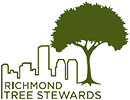Pruning
Trees need pruning for a variety of reasons, each contributing to their overall health, safety, aesthetics, and functionality within their environment. It’s important to emphasize that proper pruning techniques are essential to achieving these benefits effectively and safely. Incorrect pruning practices can harm the tree and even lead to its decline. Consult a professional arborist or tree care specialist for larger or more complex pruning tasks.
Below you will find information on why we prune as well as recommendations for how to prune correctly.

Why We Prune
- Health: Pruning removes diseased, dead, or decaying branches, preventing the spread of illnesses and promoting overall tree health.
- Safety: Regular pruning eliminates weak, hazardous branches that could fall and cause harm to people, property, or utility lines.
- Structure: Pruning shapes young trees to develop strong, stable structures, preventing future issues like weak branch attachments.
- Aesthetics: Proper pruning enhances a tree’s appearance, improving its shape and symmetry, and adding beauty to the landscape.
- Sunlight: Pruning opens up the canopy, allowing sunlight to reach inner branches, fostering healthy growth and vitality.
- Airflow: Thinning the canopy promotes better air circulation, reducing the risk of fungal diseases and improving overall tree health.
- Fruit Production: Pruning fruit trees increases fruit quality and yield by directing energy to productive branches and improving sunlight exposure.
- Regeneration: Pruning stimulates new growth, rejuvenating older trees and aiding recovery from stress or damage.
- View Management: Strategic pruning enhances views by removing obstructing branches, improving sightlines and vistas.
- Urban Planning: Pruning accommodates trees in urban environments, preventing conflicts with buildings, roads, and utility infrastructure.
Street Tree Pruning in Carver
How to Prune
1. Assess the Tree:
- Examine the tree’s overall health, structure, and any issues like dead or diseased branches.
- Identify your goals for pruning: improving health, shaping, safety, etc.
2. Gather Tools and Safety Gear:
- Pruning shears or hand pruners for small branches.
- Loppers for branches up to 2 inches in diameter.
- Pruning saw for larger branches.
- Safety gear: gloves, safety glasses, and appropriate footwear.
3. Choose the Right Time:
- Late winter/early spring is one of the best times for pruning as trees are coming out of dormancy and can heal more quickly. The second best time to prune is any other time. If the tree needs it and you aren’t sure when you’ll get to it if not now, do it now.
- Avoid pruning in periods of extended heat and drought, as it adds extra stress to a stressed out tree.
- Flowering trees may be pruned right after flowering to avoid cutting off flower buds.
4. Start with Dead, Diseased, and Problematic Branches:
- Cut dead branches back to healthy tissue (live wood) using clean, sharp cuts.
- Remove branches showing signs of disease or pest infestations.
- Tiny vertical branches should be cut whenever possible.
5. Remove Conflicting and Rubbing Branches:
- Identify branches that cross, rub against each other, or grow inwards.
- Prune one of the conflicting branches to maintain a healthy structure.
6. Maintain Good Branches:
- Maintaining a good strong central leader is important for the tree’s stability.
- Trim branches that are too closely spaced, favoring those with better attachment angles.
7. Focus on Branch Collar and Proper Cuts:
- To make a clean cut, locate the branch collar (swollen area at the base of a branch) and cut just outside it.
- Avoid flush cuts or leaving stubs, as they can hinder healing.
8. Prune for Shape and Balance:
- Step back occasionally and assess the tree’s shape as you prune.
- Aim for a balanced canopy and remove any branches that disrupt the desired form.
9. Limit Pruning of Large Branches:
- Avoid removing more than 25% of a tree’s branches in a single year.
- For large branches, use a three-cut technique to prevent bark from tearing.
10. Consider the Environment:
- Take into account the tree’s surroundings, avoid cutting branches that fall and damage structures or interfere with utility lines.
- Prune to allow clearance for car doors, walkers that may edge close to the tree etc.



The Arbor Day Foundation has a wealth of information on pruning and tree care. Here are some of our favorite links:
